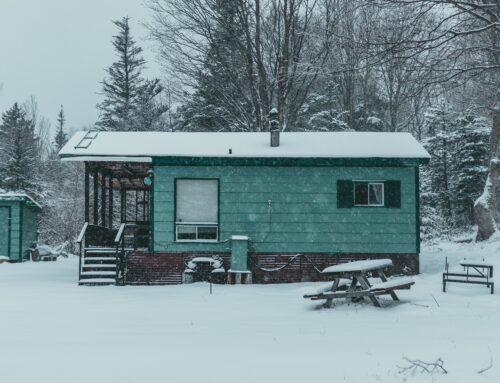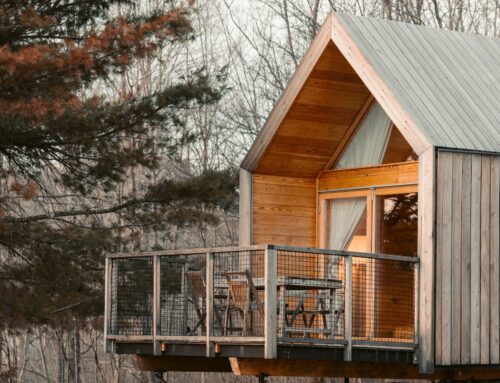As they’ve become more popular in recent years, you may have heard a friend or family member talk about building an in-law suite. Maybe you’ve seen one go up in a neighbor’s property. You may have even considered building one yourself.
In-law suites can be a great way for many homeowners to add space to their home or own an investment property, while adding valuable housing stock to increasingly-crowded cities without needing additional property. But no matter how much or how little you know about them, building one is a major financial decision. That means it’s important to understand whether or not building an in-law suite is a good idea for you in specific, and not just as a general concept.
In this article, we go over everything you need to know about in-law suites, whether you can build one, and the costs of doing so. We also provide you with some guidelines to help you decide if an in-law suite is the right investment for you.
What Is an In-Law Suite?
An in-law suite is any type of structure added to an existing property that can serve as an independent living space. They go by many different names, including accessory dwelling units (ADUs), granny flats, and mother-in-law suites. But whatever you call it, building an in-law suite is an increasingly popular way for homeowners to add a living space to their home for personal use or as a rental investment.
Types of In-Law Suites
In-law suites can come in many forms. Depending on where you live and your budget, you’ve got a wide range of options for building one. However, most ADUs fall into one of two main categories.
Detached Mother-In-Law Suite
One type of in-law suite is a detached unit that is structurally independent of the main residence. While they share a single piece of property, detached in-law suites do not share any walls, roofing, or other structural elements with the primary home.
Detached ADUs are often the best option for homeowners who want to build a rental property. This is because they provide the most privacy and separation for the renter and the homeowner. As a result, they often drive a higher rental price and tend to be more attractive to prospective renters.
A detached in-law suite is also ideal for the use that their name suggests – as an independent residence for family members or close friends. They offer the opportunity to keep a loved one close by without having to share a living space.
Addition and Conversion In-Law Suites
The other main category of ADUs is additions and conversions. Homeowners can create another living space on their property by building one onto their home or converting an existing part of the home into one.
There are a few common types of addition and conversion in-law suites, including:
- Garage additions: Many homes have garages that don’t have finished space above them. Because of their space and simple dimensions, they provide an easy and productive structure to build onto.
- Attic conversions: Attics are often unfinished spaces on the top floor of a home, meaning they tend to go unused by homeowners. This provides an opportunity to get more value out of space you already own by finishing it out and converting it into living quarters.
- Basement conversion: The basement of a home is another space that often goes underutilized or ignored completely. If your home has a basement with enough space to do so, converting it into an in-law suite can be a relatively simple and affordable process.
In-law suites built as additions or conversions can sometimes be cheaper than a freestanding structure since many of the structural elements already exist. However, they do have some significant drawbacks in comparison.
It can sometimes be difficult and therefore expensive for even the best ADU contractors to work around existing structures and infrastructure like wiring and plumbing. And if you want to use your in-law suite as a rental unit, you’ll also need to build a separate private entrance which can come at a considerable cost.
Can I Build a Mother-In-Law Suite on My Property?
There is a good chance that you can build an in-law suite on your property. In recent years, many cities and towns have loosened restrictions on ADUs, making it much easier to do so. However, depending on where you live, you’ll have to comply with regulations – often from multiple sources – and in some cases, you may not be able to build one at all.
There are a few things you’ll need to take into account to see if you can build an in-law suite on your property:
- Local regulations: Some local governments prohibit building an in-law suite in certain areas, but most have some regulations on how big you can build them, where you can build them, and other factors. You can usually find the regulations for your area on your town, city, or county’s website.
- HOA regulations: If your home is part of an HOA, you’ll also have to follow all the rules it has about ADUs and other structures on member properties. While they are not part of your local government, HOAs still hold an enormous amount of power over your home and can issue steep penalties or even repossess your home if you fail to comply with regulations.
- Available space: No matter what type of in-law suite you want to build, your property must be able to physically accommodate it. In addition to the space you need to build it, most areas have regulations about how far an ADU must be set back from your property line, which you’ll have to account for. If you want to rent your in-law suite, you’ll also have to factor in space for a private entrance.
How Much Does a Mother-In-Law Suite Cost to Build?
The cost of an independent in-law suite can vary widely. At Feel Love Homes, most of our in-law suites cost between $80,000 and $200,000 to build. However, some ADUs may fall outside of this range.
In-Law Suite Cost Factors
The cost of your ADU will depend on a few different factors, including:
- Size: Like most residential construction, in-law suites have a per-square-foot price. That means the bigger it is, the more it is likely to cost overall. However, in many cases, the price per square foot can go down the larger it gets. So, while a 20×20 mother-in-law suite will cost more overall to build than a 14×14, you may pay less per square foot of construction.
- Layout: Each bedroom and bathroom you add to your in-law suite adds to the total cost. Each additional wall increases the amount of building materials used and the complexity of construction. Bathrooms are especially expensive due to their plumbing needs.
- Local fees: The cost of permits and other fees will typically be rolled into your total build cost. The number of fees and their cost varies by location.
- Site condition: Preparing your site for construction is a major cost component. The more work your site needs, such as grading it for a foundation, the more expensive your in-law suite will be to build.
- Local labor rates: Wages for construction workers also varies from one area to the next. Generally speaking, the higher the cost of living in your area, the more your ADU contractor will pay by the hour for people to do the work.
- Financing: Unless you can pay for your in-law suite in cash, you’ll have to find financing for your project. In most cases, you can’t get a traditional mortgage for an ADU build. However, many lenders will finance a project through options such as a home equity line of credit (HELOC), home equity loan, or home construction loan.
In-Law Suite Plans
A good ADU builder will offer several plans for in-law suites for you to choose from. These will vary in terms of size, layout, and design. In most cases, you can make some modifications to these plans as long as they don’t require significant changes to the overall structure or infrastructure of the design.
Some builders will work with you to develop a custom design for your in-law suite. This is an attractive option for people who want something unique or designed for a specific purpose. However, building a custom ADU is substantially more expensive and complicated than one built from an existing design.
You can also find prefabricated in-law suite plans online and in other places. These may appear to be cheaper at first glance. However, they often require more work to fit your site to the design than an in-law suite plan designed with your site in mind. Many prefab ADUs are also built with lower-quality materials that don’t last as long and require replacement within a few years.
Should You Build an In-Law Suite? Conclusion
An in-law suite offers a lot of possibilities and an opportunity to earn additional income from a rental property. While they can be a great choice for many homeowners, they’re not right for everyone.
Before you decide to move forward on an in-law suite, consider the following:
- Does your town, city, or county allow homeowners to build in-law suites?
- Are in-law suites permitted under your HOA covenants?
- Do you have the space needed to build an ADU?
- Can you afford to build an in-law suite, either with cash or ADU financing?
If you answered yes to all of these questions, building an in-law suite can be an excellent investment and use of your property. At Feel Love Homes, we can help you take the next steps in planning and building your ADU. Click the button below to talk to one of our expert team members.






Leave A Comment